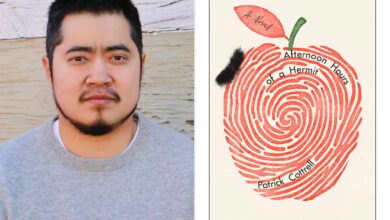Boy Diagnosed with Rare Disease. Years Later, He Could Lose All Progress (Exclusive)
:max_bytes(150000):strip_icc():format(jpeg)/Cade-Jobsis-092625-3-4e70f550f1c54d15a8505bc1a03e21e9.jpg)
After going through the unimaginable when their young son was diagnosed with a rare, neurodegenerative disease, Emma and Dylan Jobsis have found themselves once again fighting for their son.
The Alaska-based couple’s son, Cade, was just 2½ years old when he was first diagnosed with spastic paraplegia type 50, or SPG50. According to the National Organization for Rare Disorders, the disorder generally presents with a global developmental delay, moderate to severe intellectual disability, and seizures and progressive motor symptoms, amongst other things.
“We started noticing things around four to 5 months,” Emma tells PEOPLE. “Cade wasn’t hitting milestones, and we knew in our gut something was wrong. But doctors didn’t listen at first.”
Never miss a story — sign up for PEOPLE’s free daily newsletter to stay up-to-date on the best of what PEOPLE has to offer, from celebrity news to compelling human interest stories.
Leah Serena Photography
“By 9 months, he was already in physical therapy. Even then, it took until he was 2½ years old to get answers through whole genome sequencing, which revealed his rare genetic disease,” she explains.
When her family did get an answer about Cade’s diagnosis, Emma learned that SPG50 is a very rare disorder.
“Only about 100 children worldwide have been diagnosed, and Cade is one of them,” she says. “It causes progressive loss of both motor and cognitive function. Over time, children lose skills they’ve worked so hard to gain — walking, talking and even basic independence.”
Since his diagnosis, Cade, now 4, has been receiving physical, occupational and speech therapy, which are crucial for keeping him strong; however, Emma and Dylan know that the treatment doesn’t stop the disease itself. Fortunately, a new treatment was recently found.
“The only real hope is a gene therapy that has already been developed specifically for SPG50,” Emma says.
Leah Serena Photography
However, the program that was responsible for putting together the clinical trials couldn’t find all the funding needed to finance the gene therapy. So Emma and Dylan have decided to raise the money themselves.
“There was a grant we thought would carry the program forward, but it was denied,” Emma says. “The reality is that there’s little interest in funding treatments for ultra-rare diseases because they affect so few patients.”
“The system simply isn’t designed to develop drugs for children like Cade. That’s why families have been the ones raising millions to get this far. We’re hopeful that through advocacy and awareness, this can start to change,” she adds.
This last year, families raised the necessary $3 million to manufacture the therapy. They’re now in the final push to get funding needed for hospital and regulatory costs — which total to $1.15 million — to treat the next group of kids, which will hopefully include Cade. Without this funding, the program can’t move forward.
Currently, Emma says that Cade is “full of light” and communicates in his “own unique ways.”
“He uses a walker to get around, works hard in therapy and loves school and being with his friends,” says Emma. “He doesn’t speak, but he communicates in his own unique ways and has a smile that lights up the room.”
“A typical day for him includes therapy sessions, playtime and school — everything just takes more effort. Right now, he can still walk with support, and we treasure every step.”
Leah Serena Photography
But if Cade isn’t able to get the treatment he needs, he’ll begin to lose some of those skills he’s been fighting so hard for.
“Without treatment, SPG50 will continue to progress. Cade will lose the skills he has today and face more severe physical and cognitive challenges as he gets older,” says Emma. “The symptoms vary patient to patient, but in most cases, we see loss of function starting at the hands and feet and creep inward as they age.”
“Some patients lose the ability to use the bathroom or even swallow food. Decreased life expectancy is also expected and the quality of life is bleak,” she explains. “That’s why this moment is so urgent. With treatment, there is real hope — hope that he can keep the abilities he’s fought so hard to learn, and live a longer, fuller life.”
For Emma, seeing her community come together has been one of the most inspiring parts of this journey.
“What makes this journey remarkable is how much of it has been powered by families and communities,” she says. “Neighbors, small businesses and even strangers have come together to fundraise for Cade and other children.”
“It’s humbling, and it gives us strength. By sharing Cade’s story, we hope not only to raise the funds he needs, but to shine a light on rare diseases and the children who deserve a chance at a future.”
To help support Emma, Cade and Dylan, please visit their GoFundMe here. You can also visit the Cure for Cade website to learn more.
Credit to Nypost AND Peoples



